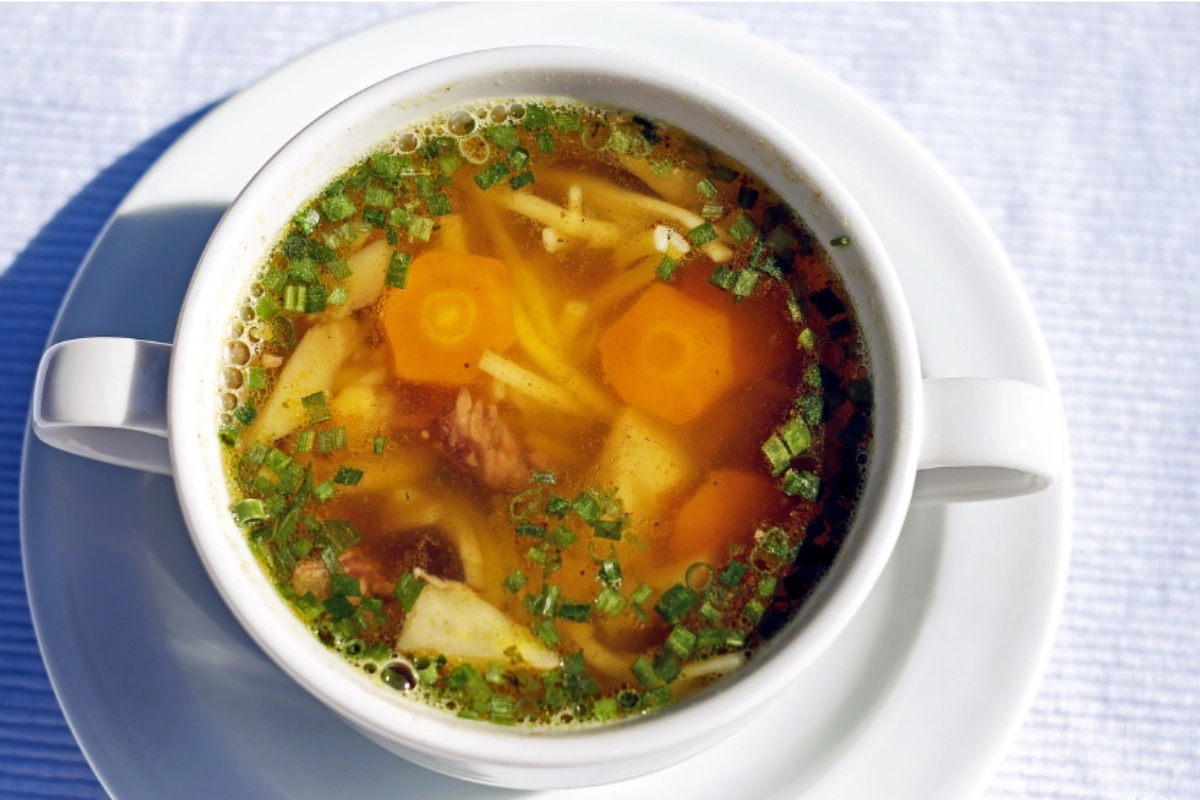Introduction to popular soups
Exploring the Comfort of Winter popular soups
Whether it’s a steaming bowl of chicken noodle soup on a snowy day or a creamy tomato bisque enjoyed by the fireplace, winter soups have a special place in our hearts and kitchens. As the days grow shorter and the nights colder, there’s nothing quite like the warmth and comfort of a well-made winter soup to lift your spirits and fill your belly.
Health Benefits of Winter Soups
Nutritional Value of Winter Soups
Winter soups aren’t just delicious; they’re also packed with essential nutrients that contribute to overall well-being. From vitamins and minerals to fiber and antioxidants, winter soups offer a plethora of health benefits that make them a valuable addition to any diet.
One of the key advantages of winter soups is their ability to incorporate a wide variety of vegetables, which are rich in vitamins and minerals essential for maintaining good health. Ingredients like carrots, spinach, and bell peppers not only add vibrant colors and flavors to soups but also provide essential nutrients like vitamin A, vitamin C, and potassium.
Moreover, the broth base of many winter soups is often made from homemade stock, which is rich in collagen, gelatin, and amino acids that support joint health and digestion. Additionally, the slow cooking process of making soups helps to extract nutrients from ingredients, making them more readily available for absorption by the body.
Popular Types of Winter Soups
Classic Recipes for Winter Soups
When it comes to winter soups, there’s no shortage of classic recipes to choose from. Whether you’re craving something hearty and rustic or light and refreshing, there’s a soup out there to satisfy every palate and craving. Let’s explore some of the most beloved types of winter soups that have stood the test of time.
- Chicken Noodle Soup: Perhaps the ultimate comfort food, chicken noodle soup is a timeless classic that warms the soul with its savory broth, tender chicken, and slurp-worthy noodles. Whether you prefer a traditional recipe or a modern twist, this soup is sure to hit the spot on a cold winter’s day.
- Creamy Tomato Bisque: Smooth, velvety, and bursting with the tangy sweetness of ripe tomatoes, creamy tomato bisque is a luxurious treat that pairs perfectly with a crusty loaf of bread or a gooey grilled cheese sandwich. Its rich flavor and silky texture make it a favorite among soup lovers of all ages.
- Beef Stew: Hearty and satisfying, beef stew is a hearty dish that’s perfect for warming up on a chilly evening. With tender chunks of beef, hearty vegetables, and a savory broth flavored with herbs and spices, it’s a complete meal in a bowl that’s guaranteed to leave you feeling satisfied and content.
- Minestrone: A hearty Italian soup brimming with vegetables, beans, and pasta, minestrone is a nutritious and delicious option for cold winter nights. Its robust flavor profile and hearty texture make it a filling meal on its own or a satisfying starter to any Italian-inspired feast.
- Butternut Squash Soup: Smooth, creamy, and subtly sweet, butternut squash soup is a comforting and elegant choice for winter dinners. With its velvety texture and delicate flavor, it’s a perfect way to showcase the natural sweetness of seasonal produce like butternut squash and carrots
Ingredients for popular soups
Fresh and Flavorful Ingredients
- Root Vegetables: Winter is the season for root vegetables like carrots, potatoes, parsnips, and turnips, which add sweetness, texture, and bulk to soups. These hearty vegetables hold up well to long cooking times, making them ideal for simmering in flavorful broths and stocks.
- Leafy Greens: Leafy greens such as kale, spinach, and Swiss chard are nutritious additions to winter soups, providing a burst of color, flavor, and essential nutrients like vitamins A, C, and K. Whether wilted into the soup at the end of cooking or blended into a creamy base, greens add freshness and vibrancy to every spoonful.
- Proteins: From tender pieces of chicken and beef to hearty beans and lentils, proteins are essential for creating satisfying winter soups that will keep you feeling full and fueled. Whether you prefer animal-based or plant-based proteins, there are endless options for adding protein-rich ingredients to your soups.
- Aromatics: Aromatics like onions, garlic, celery, and leeks form the flavor base of many winter soups, adding depth, complexity, and richness to the finished dish. Sauteed until golden and fragrant, these ingredients provide a savory foundation that elevates the entire soup.
- Broths and Stocks: A good broth or stock is the backbone of any winter soup, providing depth of flavor and richness that can’t be achieved with water alone. Whether homemade or store-bought, a quality broth or stock adds complexity and nuance to soups, enhancing their overall taste and texture.
- Herbs and Spices: Herbs and spices are the finishing touch that takes winter soups from ordinary to extraordinary. Whether you prefer classic combinations like thyme and bay leaves or bold flavors like cumin and coriander, herbs and spices add warmth, aroma, and complexity to soups.
Cooking Techniques for popular soups
Tips for Perfecting Your popular soups
Start with a Solid Base
Every great winter soup begins with a solid base of aromatics sautéed in oil or butter until soft and fragrant. This foundation of onions, garlic, celery, and carrots forms the flavor backbone of the soup, so take your time to develop depth and complexity at this stage.
Layer Flavors
Building layers of flavor is key to creating a well-balanced winter soup that tantalizes the taste buds with every spoonful. Add ingredients like herbs, spices, and tomato paste at different stages of cooking to maximize their impact and create a harmonious blend of flavors.
Simmer Slowly
Patience is a virtue when it comes to cooking winter soups. Letting your soup simmer gently over low heat allows the flavors to meld together and the ingredients to become tender and flavorful. Resist the urge to rush the process, and give your soup the time it needs to reach its full potential.
Adjust Seasoning
Taste your winter soup frequently as it cooks, and don’t be afraid to adjust the seasoning as needed. A pinch of salt here, a dash of pepper there – these small adjustments can make a big difference in the overall flavor profile of your soup.
Consider Texture
Texture is an important aspect of winter soups that is often overlooked. Pay attention to the consistency of your soup, and adjust it as desired by adding more liquid for a thinner soup or blending some of the ingredients for a creamier texture. Experiment with different techniques to achieve the perfect balance of flavors and textures.
Garnish with Care
The final touch that elevates a winter soup from good to great is the garnish. Whether it’s a sprinkle of fresh herbs, a dollop of sour cream, or a drizzle of olive oil, garnishes add visual appeal and additional flavor to your soup. Get creative and have fun experimenting with different garnishes to find the perfect finishing touch for your soup.
-
Serving Suggestions for Winter Soups
Creative Ways to Present popular soups
- Bread Bowl: For a cozy and rustic presentation, serve your winter soup in a hollowed-out bread bowl. Not only does this add an element of whimsy to your meal, but it also provides the perfect vessel for sopping up every last drop of soup.
- Soup Flight: Showcase a variety of winter soups by serving them as a flight, either in small bowls or shot glasses. This allows guests to sample multiple flavors and textures in one sitting, making for a fun and interactive dining experience.
- Toppings Bar: Set up a DIY toppings bar with an assortment of garnishes like grated cheese, croutons, fresh herbs, and diced avocado. Let everyone customize their winter soup to their liking, adding their favorite toppings for a personalized touch.
- Soup Shooters: Serve winter soups as elegant appetizers in shot glasses or small cups for a stylish and sophisticated presentation. This miniaturized version of soup is perfect for cocktail parties and other social gatherings where finger foods are preferred.
- Soup and Salad Duo: Pair your winter soup with a fresh and vibrant salad to create a well-balanced meal that satisfies both the appetite and the palate. The crispness of the salad provides a refreshing contrast to the warmth and richness of the soup.
- Edible Garnishes: Get creative with your garnishes by using edible items like toasted pumpkin seeds, crispy bacon bits, or swirls of flavored oils. Not only do these garnishes add texture and flavor to your winter soup, but they also add visual interest to the dish.
- Family-Style Platter: Serve winter soups family-style in large bowls or platters placed in the center of the table, allowing everyone to help themselves and pass the dish around. This communal dining experience fosters a sense of togetherness and conviviality, perfect for sharing a meal with loved ones.
FAQs About popular soups
What are the Five Basic Types of Soups?
- Clear Soups: Thin, flavorful broths made by simmering meat, poultry, or vegetables in water. Examples include chicken broth and beef consommé.
- Thick Soups: Hearty soups made with a thickened base, often using ingredients like roux (butter and flour), potatoes, or legumes. Examples include cream soups and bisques.
- Pureed Soups: Smooth and velvety soups made by pureeing cooked ingredients until smooth. Examples include butternut squash soup and vichyssoise.
- Broth-Based Soups: Soups made with a flavorful broth base, often filled with chunks of meat, poultry, vegetables, and sometimes grains or pasta. Examples include chicken noodle soup and minestrone.
- Chowders: Rich and hearty soups made with milk or cream, often featuring seafood or vegetables. Examples include clam chowder and corn chowder.
What are Three of Your 5-a-Day Soups?
- Vegetable Soup: A hearty mix of carrots, celery, onions, tomatoes, and other seasonal vegetables cooked in a flavorful broth.
- Minestrone Soup: Packed with beans, pasta, and a variety of vegetables like carrots, zucchini, and spinach, minestrone soup is a delicious way to boost your vegetable intake.
- Butternut Squash Soup: Creamy and satisfying, butternut squash soup is made with roasted butternut squash, carrots, onions, and garlic, providing a healthy dose of vitamins and minerals
FOR MORE RECIPES CLICK HER


